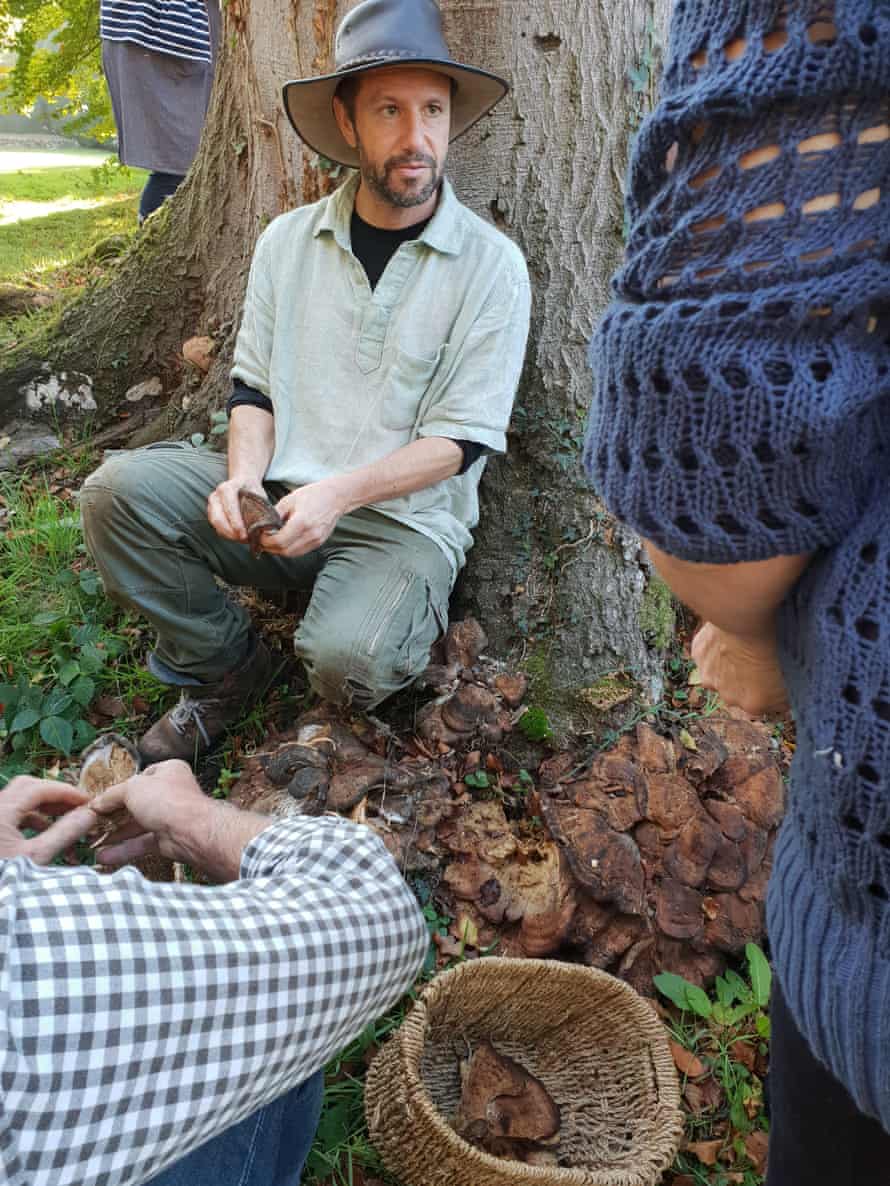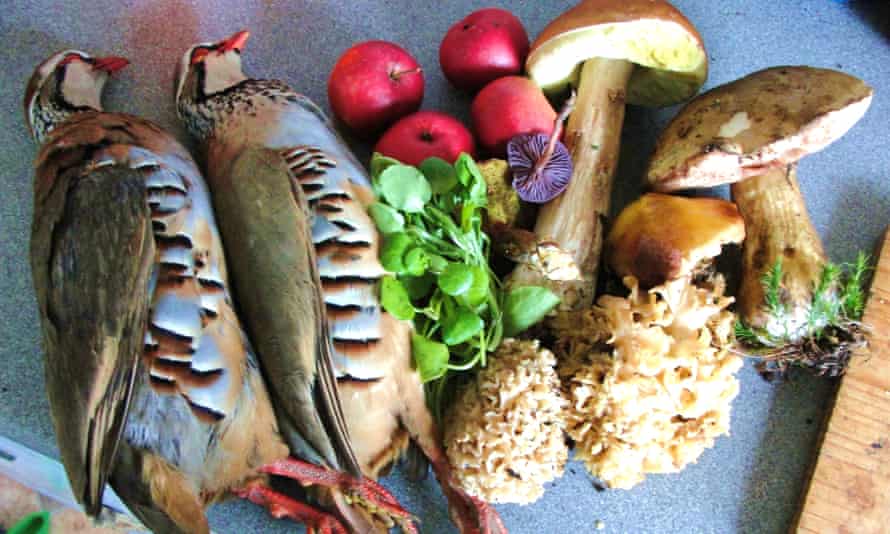Motorists shoot me funny looks as I sheepishly cross a scrubby verge, trying my best to conceal the dead pheasant under my arm. I am in a part of Saddleworth Moor called the Isle of Skye by locals, and have just collected a free meal from the middle of the road.
Nobody can agree on how this area of moorland, in the West Riding of Yorkshire, earned its nickname. Some think it comes from a Victorian navvy, who exclaimed in a broad Irish brogue: “Look, there’s an ‘ole in the sky,” as he considered a parting in the thick mist above him. Others think it was named after an inn of the same name. But either way, the area should be immediately renamed Pheasant Cemetery. Because, before I picked up my own bird, I counted 46 pheasant carcasses in various stages of decomposition, scattered and splattered on the road over several miles as I drove to Holmfirth for a day out.
This carnage on the Isle of Skye is not unique. According to a recent study, 194m birds and 29m mammals die on European roads every year. In 2018, Dr Sarah Perkins, project coordinator at Project Splatter, started to quantify and map roadkill across the UK. She says the most frequent victims on the roads are badgers, hedgehogs, rabbits, pigeons, pheasants and blackbirds. Perkins says that around 20,000 instances of roadkill are reported to her annually. “It’s probably a fair estimate to scale that up to millions of animals every single year,” she says.

Scraping my tea off asphalt would never have occurred to me before; I prefer to buy meat that is faceless and feather-free. But, for the past few months I have been living with my parents – and they are bargain-obsessed. At about 7pm every day we have been journeying across the moors to the nearest supermarket to raid the reduced shelves.
My parents do not care how a dead bird makes it to their plates: free meat is free meat. They have been eating roadkill for years and, ever since I came home, they have been trying to force it on to my plate. They insist it is perfectly safe. Still, I had my reservations as I watched my dad pluck the fiery red and gold feathers from the unfortunate bird on our chopping board one Sunday afternoon. How can we tell how long it has been dead? What if it has had a disease? Are we sure this is legal? Under the Road Traffic Act, you are expected to report any fatal accidents involving household pets, horses and farm animals, but it is not illegal to munch other roadkill so long as it was not run over on purpose. And, as far as safety is concerned, it is quite straightforward, according to the professional forager Fergus Drennan.
Drennan, 49, runs foraging courses for the public, and has been eating roadkill, or “accidental meat”, as he prefers to call it, for decades. He argues, over the phone from his home in East Sussex, that it’s obvious whether roadkill is safe to eat: you just need to check if it is warm, stiff and intact. “If it’s warm on a cold day then obviously it’s fresh; if it’s got rigor mortis, it means it’s really fresh. You don’t want it to be completely smashed to pieces,” he says.
I tell Brennan that I was debating if it would be possible to eat some of the more flattened carcasses. “Oh Jesus, don’t use that old journalistic cliche!” he says. “Who in their right mind would scrape an animal off the road? It has got to look in immaculate condition.”
“What about if its head is missing?” I ask.
“You’re not going to eat the head of a pheasant anyway, so it’s perfectly all right, isn’t it? If everything else is all right.”
Brennan mostly eats run-over deer, but has dined on foxes, squirrels and at least 30 badgers over the years. But he doesn’t make just meals out of roadkill, he makes art pieces, too. “The reason I’m interested in the badger is because they have such fascinating skulls,” he says. Brennan explains that, unlike most animals, which have sinew and tendons connecting their jaw bones together, the badger’s mandibles come as a one-piece and open and close like Pac-Man.
Badgers might make for fine artwork, but they aren’t the tastiest creatures you can find on the roads. Brennan says they taste like lamb, with an aftertaste that resembles their diets – earthworms, with the occasional frog or hedgehog thrown in. I was going to ask Brennan how he knows what these animals taste like, but I’m not sure I want to know the answer.
It is not humans alone who take advantage of roadkill. Perkins was involved in an experiment that used fake roadkill to see how quickly it was scavenged: 90% of what they distributed was devoured by other animals over 12 hours. However, in rural Dorset, the animals might have slim pickings when the naturalist and taxidermist Jonathan McGowan is on the prowl.
McGowan says he started by feeding the roadkill he found on the roads to the buzzards, then realised it could supplement his own diet. “I’ve eaten roadkill for the whole of my adult life. I’ve hardly ever bought any commercial meat,” he says. “All my meat comes from roadkill. Birds, rodents, badgers, foxes, owls, rats, deer. Anything, really.”

McGowan is disabled and he has been coping with Lyme disease for many years. Over the past year, it has caught up with him and he has been housebound, longing for the outdoors. Lyme disease is usually passed to humans from the bites of infected ticks, and although McGowan thinks he contracted it while wandering through the woods it could have come from the animals he finds. “That’s one of the hazards of picking up dead animals and doing taxidermy, because lots of mammals and birds have ticks on them.”
So, you risk getting ill when picking up roadkill? “Most [wild] animals don’t have disease – they’re really healthy. Especially young animals – they don’t have time to build up diseases,” McGowan says. He also claims that the dead animals he finds on the roads are cleaner than farm animals that are susceptible to maladies such as CJD and foot-and-mouth disease. He says that pheasants can be infected with leptospirosis and bacterial diseases, but that cooking the meat will eliminate these. The Food Standards Agency, however, is absolutely not in favour of people eating roadkill, pointing out “the animals may not have been healthy when killed and may have been suffering from disease or environmental contamination. There is also no way of determining how long the animal has been at the roadside.”
But McGowan insists that motorists in particular would do better to worry about other risks. After all, gamekeepers release millions of birds into the wild every year, many of which are involved in road-traffic accidents. A motorcyclist died in Wales in 2018 after a pheasant flew into his helmet. “They’re only bred so a few morons can point shotguns at them and blow them to pieces,” he says. “That’s what gamekeeping is all about. It’s a cruel, immoral, unjust practice.”
There are twin peaks to the pheasant-foraging calendar: at the beginning of the shooting season, when they are released from their pens, and at the end of it, when the birds are deprived of supplementary feeding and must fend for themselves. If they survive the guns, they can have a much better life than the average battery hen. Unless, of course, a car cuts it short. As Drennan points out, a wild animal “is not designed to be aware of a ton of metal coming at 30 or 70 miles an hour. At the end of the day, we live on a small island; there’s always gonna be a conflict between the human animal and other animals. And there are too many roads, and we are rushing around.”
It is not merely badgers, squirrels and overly bred game that are dying on UK roads. McGowan says he finds a variety of rare animals including snakes, lizards, bats and falcons. “Cars don’t discriminate,” he says. “Every animal that’s out in the countryside or even in the town succumbs to the roads.”
So, what can we do to mitigate roadkill? We can start by slowing down a little and “we can change animal behaviour”, says Perkins. “We can do that by putting in mitigations, so there are underpasses, river passes. There are specific mitigations for some species and a lot of new road builds have that.” Road-mitigation schemes consist of tunnels that allow amphibians, rodents and other small animals to cross safely, but much more needs to be done to make the roads safer for wildlife.
To return to our pheasant, my parents hung it up for three days to tenderise it. Then they plucked it, put it in a port marinade and whacked it in the oven. After some reservations, I tucked in. It was a bit gamey and tough, but edible. I survived.